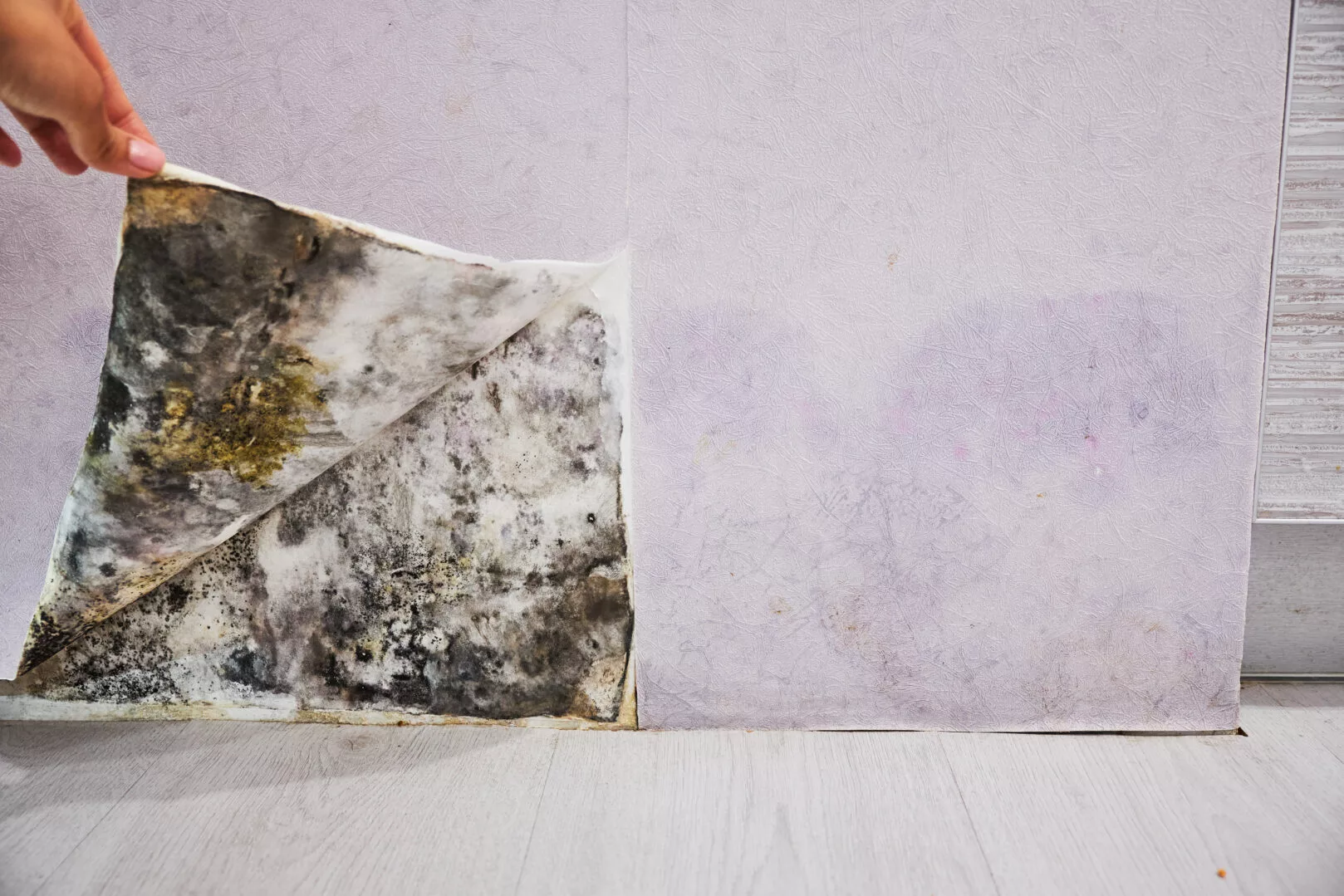Mould often grows inside of properties, both homes and businesses. Depending on the scale of the mould you may be able to complete DIY mould removal yourself. There are over one-hundred-thousand species of mould. The three most species found in properties are:
- Stachybotrys
- Chaetomium
- Trichoderma
What are the Signs?
Mould is a type of fungal growth. Like all fungi, it requires specific conditions to flourish. It grows in damp areas with little to no airflow. Mould also requires a source of food. If your property develops all these requirements, mould growth begins. You can spot mould growth by its visual signs and by the hazards that prolonged exposure to mould can cause. The physical signs of mould proliferation are:
- Musty earthy odours
- Green/Brown/Black patches on surfaces
- Furry patches on surfaces
What Is Mould Removal? How Do the Professionals Do This?
Mould removal or mould cleaning is how you clean up after mould has grown. This means removing both airborne mould spores and surface mould. Mould killer and other mould treatments, like the name suggests, kill the mould. Experts, such as those at Ideal Response, use many technologies. This is to make sure we remove all traces of mould.
A professional mould removal service provider has expert knowledge and modern gear. When they get involved, the typical mould removal service involves decontamination and testing. Testing identifies any trace of biological (fungal) DNA. This way, it shows cleanup experts whether the surfaces are clean.
DIY Mould Removal
A DIY mould cleaning solution not working is only one risk. The more significant concern is that it can – and often does – worsen the problem. Without the correct equipment and cleaning solutions, you may complicate the problem.
Common risks include:
- Adding More Moisture
Many cleaning products contain a significant amount of water. For example, chlorine bleach and traditional bleach both contain water. These are common cleaning agents. Using one of these to remove mould means you’re adding water to the surfaces you are attempting to clean. Water further saturates the porous material. This means mould actually gets what it needs to grow and thrive.
- Spreading Mould Spores
Another risk when you clean mould yourself is the spread of mould spores. Attempting to wipe mould releases spores into the air. These spores will spread and settle on new surfaces. If these surfaces are still damp, these spores will grow and add to the existing mould issue. Without HEPA filter/vacuum technology, you can’t capture all the airborne microscopic spores. As a result, spores can spread. This is a big risk when cleaning mould without professional help.
- Exposure and Personal Safety
Mould is a Category One health risk, the same as Asbestos. Direct exposure to it poses a significant health threat. A professional mould removal service provider has two priorities. The first is satisfied customers, and equally important is the safety of the cleanup team. At Ideal Response, we emphasise our experts’ safety. We achieve this by carrying out extensive assessments and risk assessments. Additionally, our experts wear professional-grade Personal Protection Equipment (PPE) during mould removal services. In severe cases, we equip our mould specialists with respirator systems.
The Danger of Exposure
Without the required knowledge and PPE, you are exposed to mould – a serious threat to your health and wellbeing. Many of the mould species that grow in properties are allergenic or toxigenic. Exposure to these can lead to life-threatening respiratory and allergic reactions. Choose wisely and let a professional partner like Ideal Response guide you out of mould-related danger.



